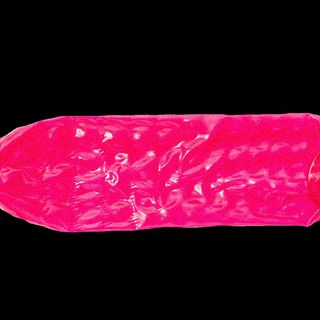Don’t freak out. All of us have tiny mites living in the pores of our faces and they are usually harmless. Known as Demodex, they are impossible to see with the naked eye, and spend most of their time inside of our pores. They crawl back out to mate when humans are asleep and go back inside the pores to lay their eggs.
We pick up Demodex early in life, likely from mothers’ mammary tissue. We also pick it up from other people and things like sheets, pillows, and towels we come in contact with. While it is possible for mites to get transmitted among humans, researchers also suspect that humans pick them up from other animals, as one type of mite found on the face, the d. brevis, is similar to a species that lives on dogs.
Demodex are mostly found on the face, rather than other parts of the body, because it has larger pores and more sebaceous glands. These mites feast on dead skin cells and sebum, the greasy oil our skin makes to protect itself from drying out. Therefore, some of the largest concentrations are around the greasiest parts of the body, such as the eyes, nose, and mouth.
While it’s impossible to get rid of face mites by scrubbing or washing the face because they live inside the pores, it is important to remember that “They’re not dangerous in a broad sense because we all have them and most of us seem to be cohabiting quite well with them,” Michelle Trautwein, an entomologist at the California Academy of Sciences in San Francisco told NPR.
Related on The Swaddle:
With Little Guidance, Adult Acne Sufferers Turn to Treatments That Make Skin Worse
Some people may be more sensitive to the presence of the mites because of their genetic predisposition. Our immune systems keep mites’ numbers in check, so people with weakened immune systems due to cancer, HIV, or the intake of corticosteroids might have more face mites than normal.
Because Demodex eats sebum, the oil our face secretes, any change in the oiliness of our skin can cause a population boom. An increase in the number of mites has also been noted in people with blepharitis or inflammation of the eyelids that can cause crusting, watering, and redness.
An increased amount of Demodex or face mites might lead to the skin developing rosacea-like symptoms such as dryness, itching, flushing, redness on the skin and the eye, and a skin that feels rough. These symptoms are often mistaken for acne or skin dryness but actually may be the result of a population boom of Demodex.
An over-abundance of Demodex must be treated by a doctor, usually with topical treatments such as antibiotics. Doctors also treat this by applying high-concentration alcohol solutions to the face, which brings Demodex to the surface, and then applying substances to the skin that kill the mites.
Doctors recommend avoiding oil-based cleansers and greasy make up that increase the concentration of oil that makes for excessive food for the mites. Exfoliating to remove dead skin cells, another type of ‘food’ that face mites eat, might also help in reducing their numbers, but these methods will not help in eliminating the face mites completely. Because we’re stuck with face mites for life.




